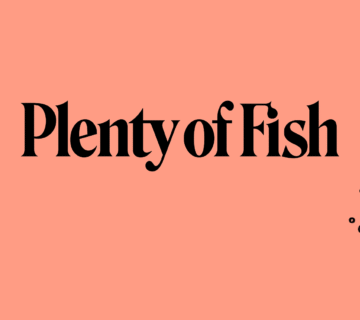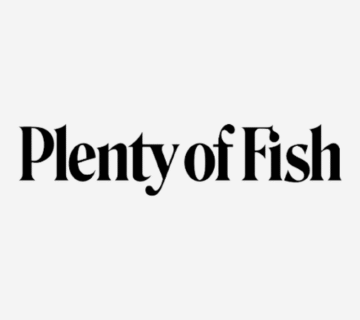Introduction
Plenty of Fish (POF) once stood as a flagship dating site—famous for its free messaging and a diverse, global user base. But as online dating keeps evolving and new apps launch seemingly every month,
many singles and former users ask: What happened to Plenty of Fish? Is it still relevant,
and how has it transformed in recent years?
The Origins and Rise of Plenty of Fish
Founded in 2003 by Markus Frind, a Vancouver-based programmer,
POF was bootstrapped from a spare-room project to one of the world’s largest dating platforms. Its no-cost approach, simplicity,
and later innovations like the Chemistry Test let it grow explosively—
serving millions worldwide and playing a role in countless relationships and marriages.
-
Operated without venture funding: Kept costs and barriers low.
-
Free to use: Opened the door for casual and committed singles alike.
-
Early mobile app adoption: POF was one of the first dating platforms to launch on iOS and Android, capturing a wave of new users in the 2010s.
Major Milestones and Changes in Ownership
-
2015 Acquisition: In a landmark deal, Match Group (owner of Tinder, OkCupid, Hinge, and Match.com) bought Plenty of Fish for $575 million. Founder Markus Frind remained CEO until 2019, and the brand was folded into Match Group’s Evergreen division.
-
Brand Expansion: POF maintained its Vancouver HQ and grew a global footprint, serving over 90 million registered users at its peak.
Transformation and Challenges (2015–2025)
1. Features and Platform Shifts
-
Mobile-First Era: With smartphone dominance, POF put increasing emphasis on its mobile apps, supporting expanded verification, chat, and safety tools.
-
Security & Anti-Spam: POF faced—and addressed—security incidents, such as the 2011 hack and anti-spam fines. Over time, its policies and security matured—now featuring more robust reporting, content filters, and verification badges.
-
User Verification and Profile Changes: Over the years, POF banned face filters in 2019 to boost authenticity, increased moderation, and in 2025 replaced classic usernames with real names in profiles—modernizing the approach and aligning with other leading dating brands.
2. Revenue and Market Standing
-
Revenue Declines: From a $270 million peak, POF’s revenue fell sharply—a 23% drop to $208 million in 2023, largely due to fierce competition from Tinder, Bumble, and Hinge, which capture a younger crowd.
-
Distant Fourth in US Market: POF is now the fourth largest dating app in the US, after Tinder, Bumble, and Hinge.
3. A Major Rebrand for a New Era
-
Hard Reset and Rebrand (2023): POF recently overhauled its brand and app, emphasizing genuine connections, inclusivity, wellness, and a less “stressful” digital dating environment. The company worked to target younger users (Gen Z and millennials, ages 25–35) and improve “unaided awareness”—its share of mind without advertising prompts.
-
Realness and Simplicity: Moderators actively remove heavily-edited pictures, bots, and inauthentic profiles, protecting the brand’s “friendly waters” reputation.
4. New Platform Features
-
Livestreaming: Rolled out in 2020 to keep up with the shift to video and community-based discovery.
-
Innovative Dating Trends: Each year, POF surveys users and reports on new lingo and trends (like “Smutten,” “Freak Matching,” and “Yap-Trapping”), keeping the platform relevant to pop culture and changing user behavior.
User Experience Today: Is There Still “Plenty of Fish”?
-
Diverse Age Range but Aging Demographic: POF intentionally courts younger users now, but the majority remain millennials and Gen X’ers. Still, there are millions of active accounts globally, with broad appeal from 20-somethings to those over 50.
-
Messaging and Matching: Historically prized for unlimited free messaging, POF has introduced limits to manage spam—like daily caps on initial contacts for free users—prompting some backlash, but keeping the platform sustainable.
-
Free-to-Paid Shift: POF offers a robust free tier, but premium upgrades (ad-free, profile boosts, more filters) have become more prominent as the business model shifts.
-
Privacy and Safety: Ongoing work on anti-scam features, selfie verification, data updates (fixing past leaks), and tighter moderation keep users safer than in earlier years.
Criticisms, Controversies, and Community Feedback
-
Competition from Better-Designed Apps: The user base is now smaller compared to trendy apps, and some criticize POF for a dated interface and perceived lack of innovation.
-
User Gripes: Common complaints include strict verification, bugs with photo uploads, and lingering fake accounts or spam—though the company continues to adapt its security methods.
-
Username Removal (2025): The move to replace usernames with real names sparked debate among long-timers.
Notable 2025 Updates and the Future of POF
-
“Plenty of Fish” is not dead: While smaller than peak years, millions of active global users prove there’s still a dating pool—especially for those seeking less polished, more authentic connections.
-
Persistently Evolving: The platform issues annual dating trends, innovates on features, and adapts to cultural shifts (influenced by TikTok, Gen Z slang, etc.).
-
Ongoing Challenges: To survive and grow, POF must continue modernizing, balance free and paid perks, and keep engaging younger users along with its longtime faithful base.
Read More: How to Block Someone on Plenty of Fish (POF) in 2025: The Complete Guide
Conclusion
Plenty of Fish has weathered two decades of digital dating transformation: from a scrappy bootstrapped disruptor to a major,
Match Group-owned platform now battling market leaders for relevance in a crowded field. Major policy, feature, and branding shifts have followed,
including a big 2023 rebrand,
caps on messaging, and efforts to make the platform safer, more real, and accessible for younger users. Is it dead? Far from it. In 2025,
Plenty of Fish remains active—with millions still in the pond—but it’s a smaller, more focused, and radically transformed version of its former self.
If you’re looking for authentic, budget-friendly dating, or just want to see how the old-school apps have evolved,
POF remains a (still swimming) classic in the ever-shifting ocean of online love.





[…] Read More: What Happened to Plenty of Fish Dating? The 2025 Deep-Dive […]